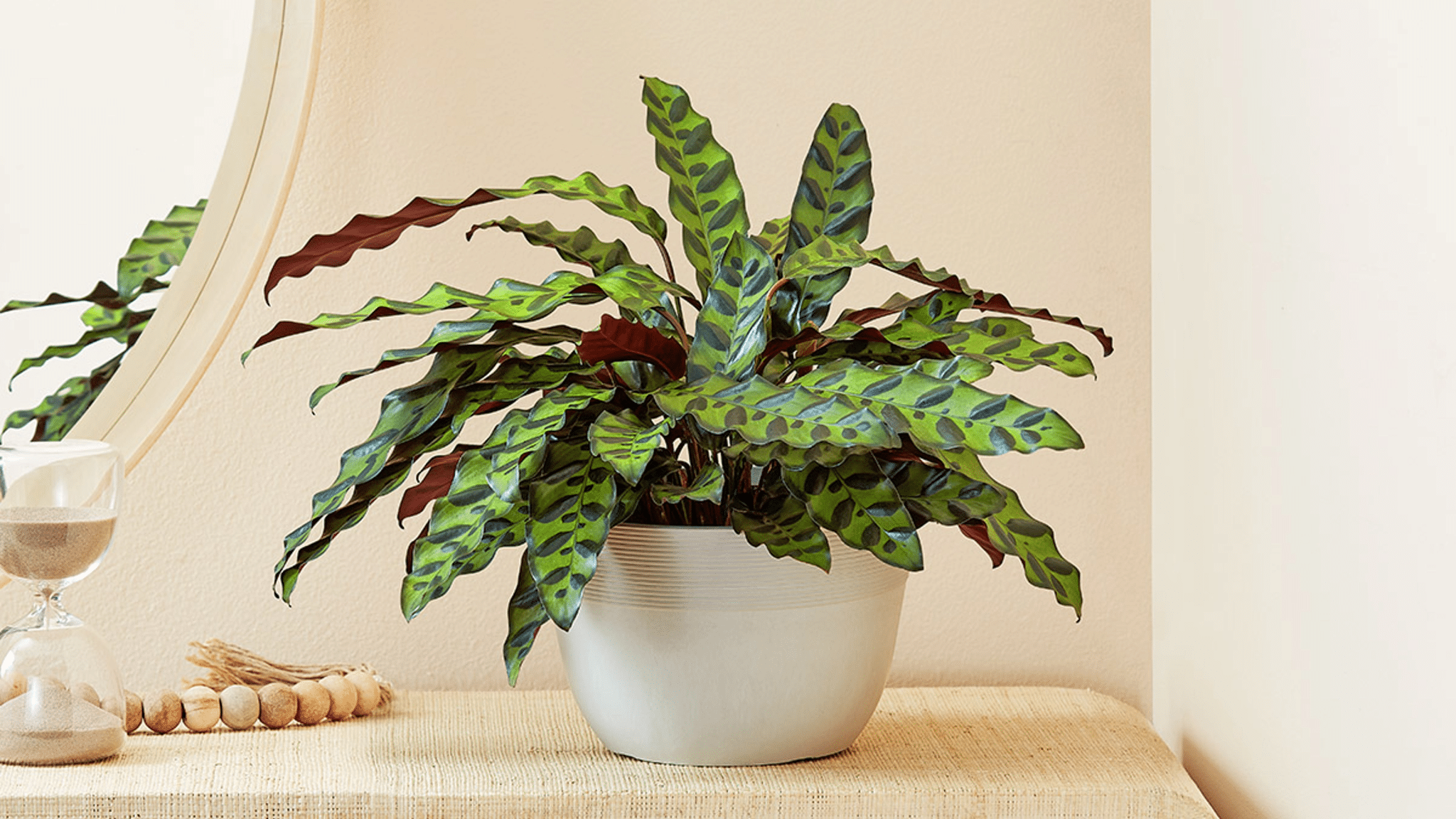Houseplants give indoor spaces a pleasant and attractive appearance and offer many health benefits. They keep the air fresh and clean, reduce stress, and provide peace of mind. Depending on the requirements of the indoor space, houseplants are available in various shapes and sizes.
The rattlesnake plant is a striking and popular houseplant due to its vibrant leaves and unique patterns. It is native to the tropical rainforests of Brazil and is an excellent choice for indoor spaces because it grows best in warm and humid conditions. Its leaves are edged with dark green spots on a lighter green background and deep purple undersides.
Visit Growycle for complete rattlesnake plant care guidelines for new and experienced homeowners who want to improve their homes’ natural beauty.
Appearance of Rattlesnake Plant
The rattlesnake plant can be identified by its long, lance-shaped leaves, which can grow up to 30 inches long. The leaves are vibrant green with dark green, irregularly shaped patterns that resemble those found on rattlesnake skin. These designs contrast beautifully with the dark purple lower side of the leaves, which becomes more visible as the plant moves.
Its most fascinating feature is its movement in response to light, known as nyctinasty. During the day, the leaves remain open to absorb light, but at night, they fold upward, showing the deep purple underside. This movement makes the rattlesnake plant exciting and attractive, giving indoor spaces a sense of excitement.
The rattlesnake plant is a manageable and eye-catching addition to any home or office. With proper care, it can reach an average height of 2 to 3 feet indoors and flourish for many years. Plant lovers will be rewarded with its unique and constantly shifting display.
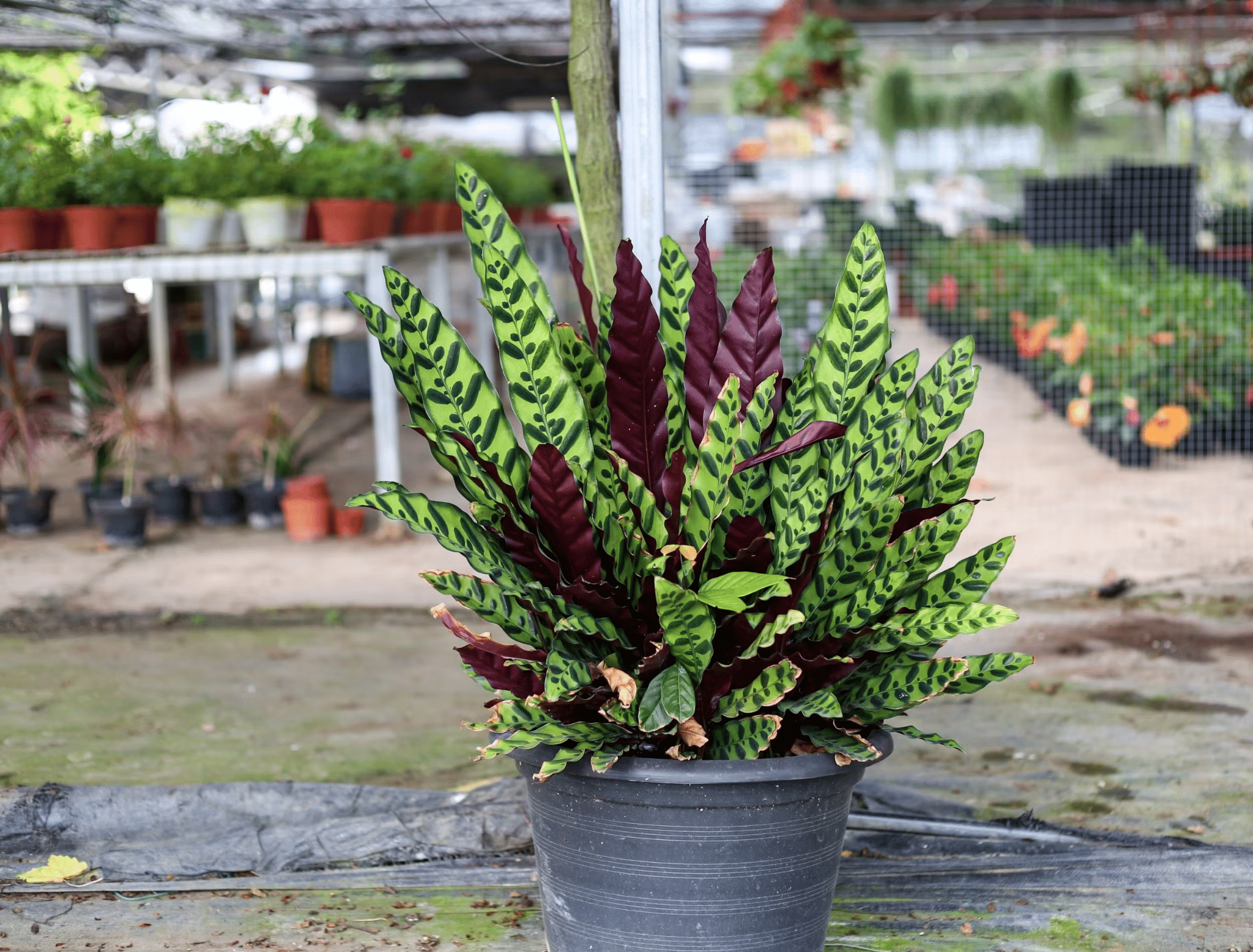
Benefits of the Rattlesnake Plant
The rattlesnake is a popular houseplant known for its striking foliage and air-purifying qualities. Here are some key benefits:
Cleans Air
This plant can improve indoor air quality. It absorbs carbon dioxide and releases oxygen while removing harmful toxins. Removal of pollutants such as benzene, formaldehyde, and other volatile organic compounds can contribute to a healthier living environment.
Improves Indoor Aesthetics
With its striking leaves and dynamic movement, the it adds a unique decorative element to any space. Its vibrant green leaves with contrasting purple undersides make it an excellent choice for brightening interiors, whether in a living room, bedroom, or office.
Boosts Mood and Reduces Stress
Green surrounding has a positive effect on mental well-being. The presence of houseplants like the rattlesnake plant can help reduce stress, improve focus, and create a calming environment. The plant’s ability to move in response to light adds an exciting touch, making it a delightful companion for plant lovers.
Pet-Friendly
Unlike some houseplants, the rattlesnake plant is non-toxic to cats and dogs. Thus, it is an excellent choice for pet owners who want to add plants to their homes without fear of their animals accidentally eating toxic leaves.
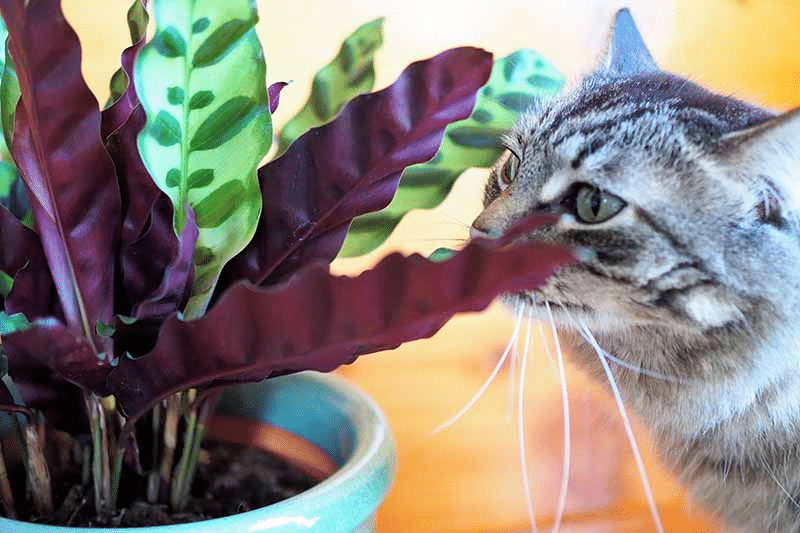
Caring for a Rattlesnake Plant
The rattlesnake plant is relatively low-maintenance compared to some other members of the Calathea family, but it still requires specific care conditions to thrive. Here are essential guidelines to keep the plant healthy and vibrant:
1. Light Requirements
The rattlesnake plant thrives in bright, indirect light. Too much direct sunlight can burn its soft leaves. Artificial grow lights can provide the necessary brightness if natural light is insufficient. Ideally, place the plant near a north or east facing window, where it can receive filtered light without direct exposure to harsh rays.
2. Watering Needs
Proper irrigation is essential to keep the rattlesnake plant healthy. It likes consistently moist soil but does not tolerate being overly saturated. Too much water can cause root rot, while under-watering may cause the leaves to dry and curl. To keep the balance:
- When the upper layer of soil appears dry, apply water to the plant.
- Use filtered, distilled, or rainwater, as tap water containing fluoride or chlorine can damage the plant’s sensitive leaves.
- Ensure the pot has good drainage to prevent water from accumulating at the roots.
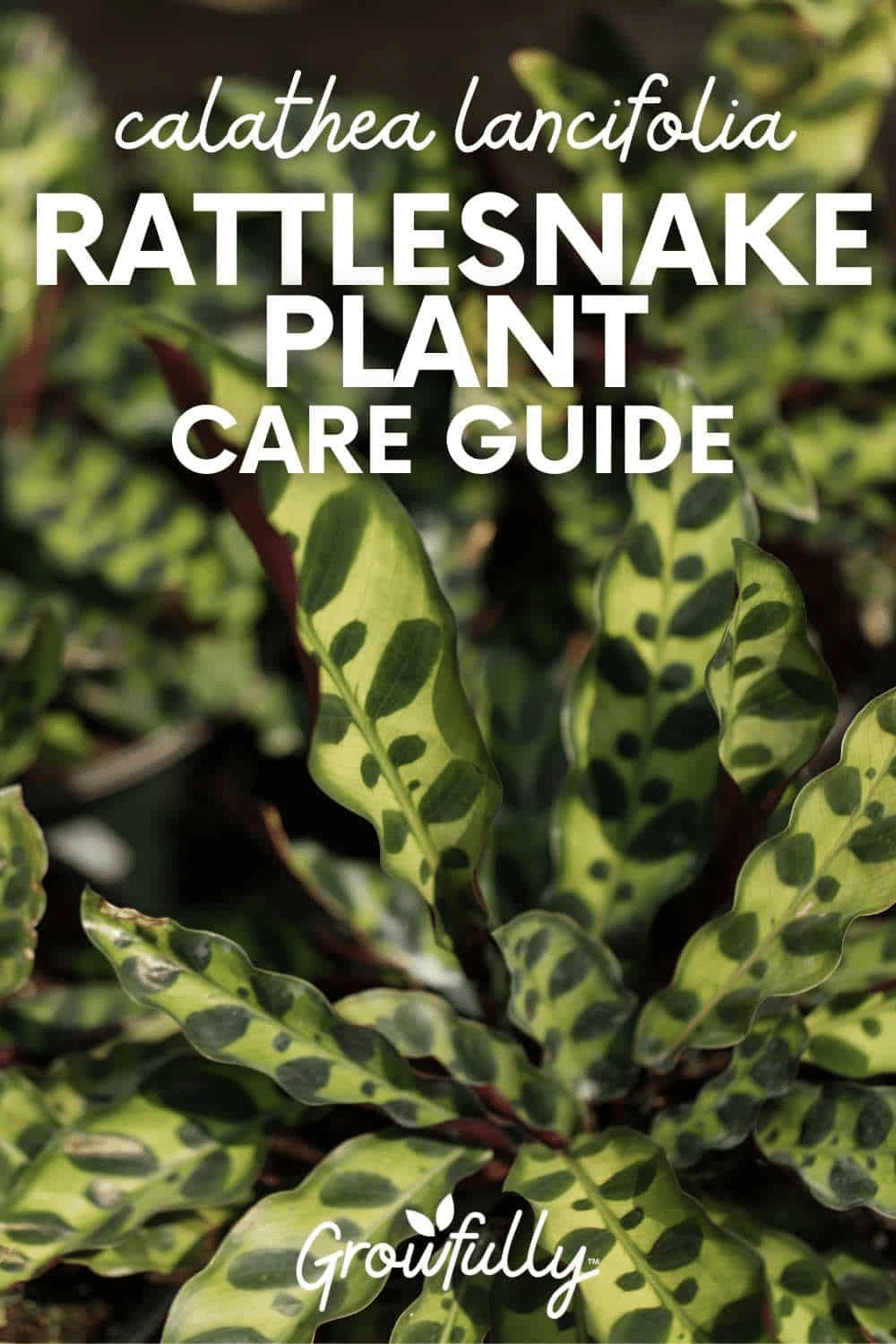
3. Humidity and Temperature
The rattlesnake plant flourishes in high humidity levels (around 50-60%) as a tropical plant. The following methods can help maintain humidity if the air inside the house is dehydrated, especially in the winter:
- Use a moisturizing device to develop the ideal environment.
- Spray the leaves regularly with distilled water.
- Place a tray filled with pebbles and water under the plant’s pot to increase moisture levels.
As for temperature, the ideal range for the rattlesnake plant is between 65°F and 80°F. The plant may become stressed by rapid variations in temperature, so keep it away from heaters and air conditioners.
4. Soil and Fertilization
A well-draining, nutrient-rich soil mix is ideal for the rattlesnake plant. A peat based potting mix combined with perlite or orchid bark retains moisture while preventing compaction.
Fertilize the plant with a balanced, diluted liquid fertilizer every four to six weeks during the growing season to promote healthy growth. However, avoid over fertilizing, as excessive nutrients can lead to leaf burn.
5. Pruning and Maintenance
The rattlesnake plant does not require frequent pruning, but occasional maintenance can help keep it looking its best. Trim any yellowing or damaged leaves with clean scissors to encourage new growth. Regularly cleaning the leaves with a wet cloth will also help remove dust and allow for better light absorption.
6. Repotting
As the plant grows, it may outgrow its container and require repotting every two to three years. Roots growing out of the drainage holes or slower growth due to depleted nutrients show it needs repotting. Choose a slightly larger pot with fresh soil to give the plant more room to grow.
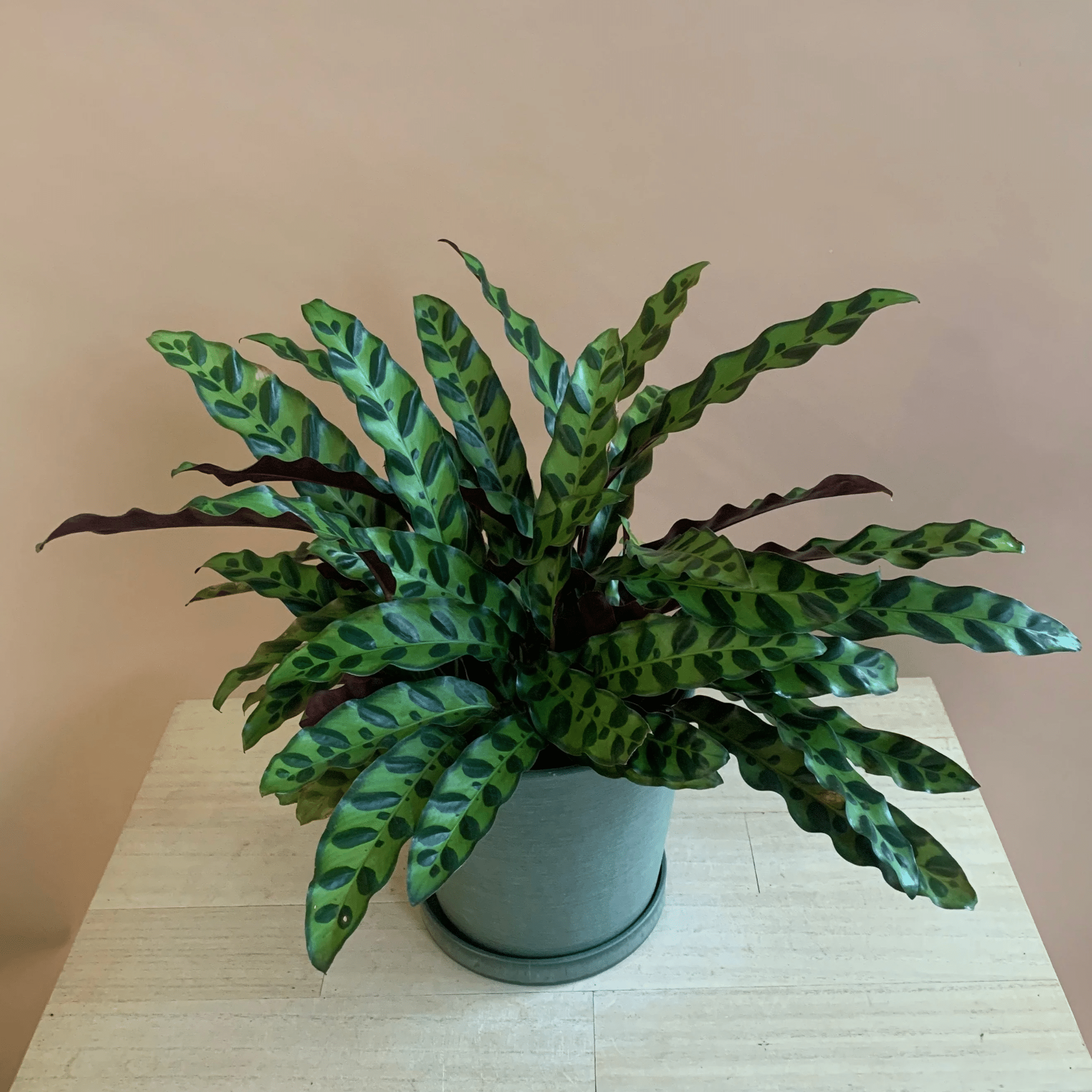
FAQs
Why are the leaves of my rattlesnake plant curling?
Leaf curling usually indicates underwatering, low humidity, or cold temperatures. Check the soil moisture, increase humidity, and ensure the plant is kept in a warm environment.
Does the rattlesnake plant move?
Yes, the rattlesnake plant’s leaves can move in thethe direction of light as they show nyctinasty. They open during the day and fold upward at night to reveal the deep purple undersides.
Can rattlesnake plants be propagated?
Yes, but not from cuttings. The best way to propagate a rattlesnake plant is through division when repotting. Gently separate the root clumps and plant them in fresh soil.
The Bottom Line
The rattlesnake plant is a beautiful, low-maintenance houseplant that adds a vibrant touch to indoor spaces. Its unique foliage, air-purifying properties, and pet-friendly nature make it a favorite among plant lovers. Visit Growcycle to get this beautiful indoor plant and learn about its care requirements.

